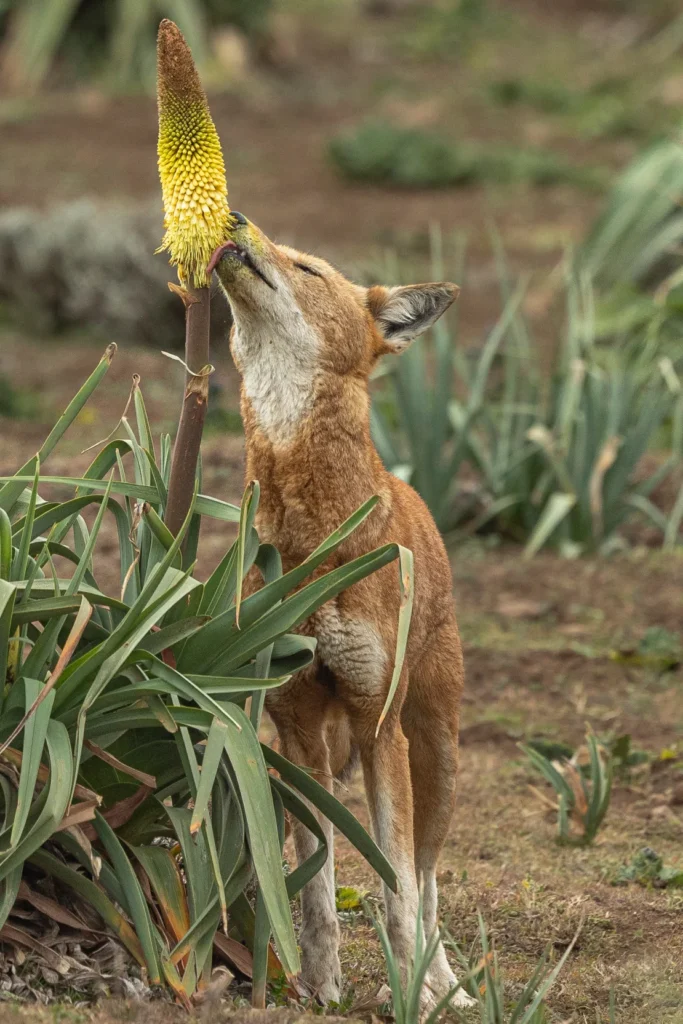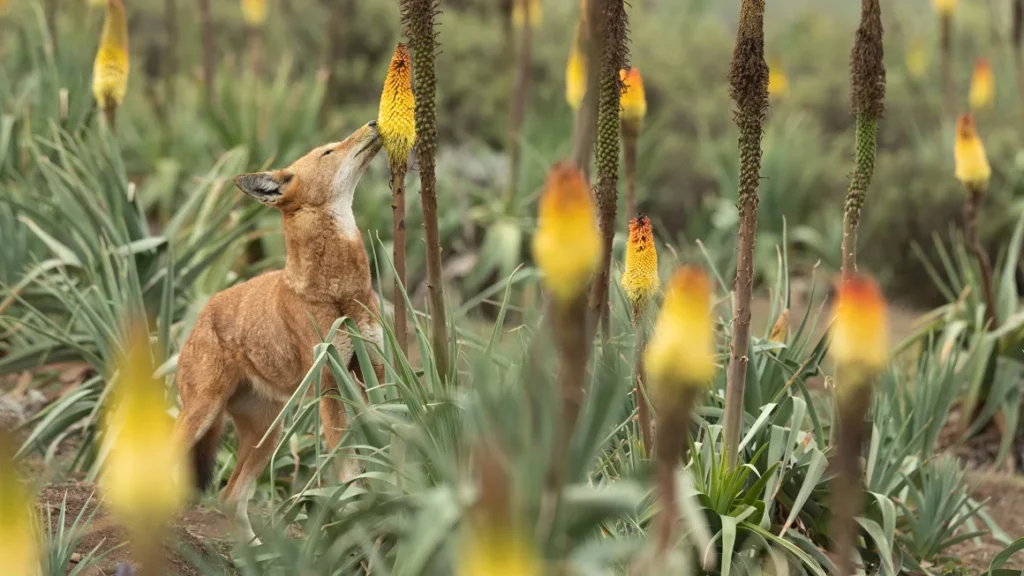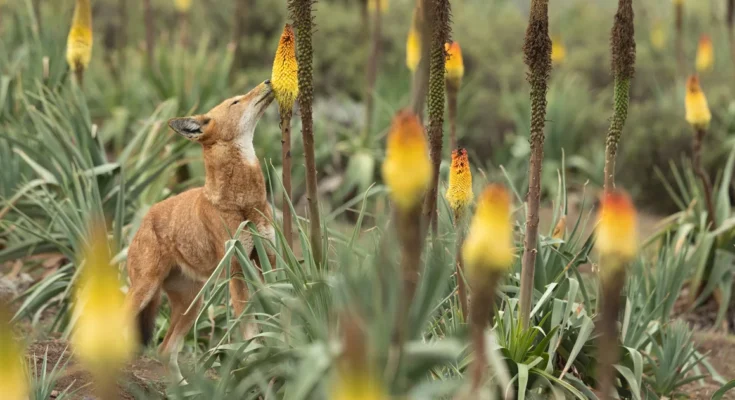
On one of his first trips to study wolves in Ethiopia in the late 1980s, biologist Claudio Sillero observed a highly unusual behavior: these local predators were deliberately licking the vibrant flowers of the red hot poker plant that grows in the country’s highlands.
Relatively few mammals have been documented drinking nectar and this was the first reported case of a large carnivore doing so, according to new research. “I wasn’t quite expecting the wolves had a sweet tooth! They were clearly enjoying dessert,” Sillero, a professor of conservation biology at Oxford University, said in an email.
He and other scientists have informally observed Ethiopian wolves exhibiting this odd behavior over past few decades. Now, a study published in the journal Ecology in November and coauthored by Sillero documents it in detail for the first time and suggests that the wolves may even help to pollinate the distinctive flower.

Sillero and his colleagues followed six wolves from three different packs frequenting the flowers over four consecutive days from late May to early June — the start of the plant’s six-month blooming season. All six animals were reported to have licked the flowers, though the total time spent licking the flower heads varied a lot, from around one minute to 1.5 hours. The endangered predators are regularly monitored as part of the Ethiopian Wolf Conservation Programme founded by Sillero in 1995 following his first few visits to the region.
thiopian wolves almost exclusively prey on small rodents — the nectar simply supplements their meat-based diet, according to Sillero. Researchers have explained this dietary choice with “the dessert hypothesis,” a theory that describes how a species will make use of an extra resource that they enjoy, but don’t need, when it is available.
Other animals also enjoy the sweet-tasting nectar of the country’s highland flowers, he added, noting “baboons are very partial to them, mountain goats will go and have a go at them, domestic dogs will also partake.” After watching the local shepherd’s children playing with and licking the flowers, Sillero couldn’t resist trying them himself, describing them as “indeed very sweet and quite pleasant.”
The significant amount of pollen which accumulates on the wolves’ muzzles — and the fact that some individuals were seen visiting up to 30 different blooms in a single foray — could mean the wolves help pollinate the plant by transporting pollen from flower to flower, according to Sillero. It’s the first possible case of a large carnivore acting as a pollinator, the study noted.



